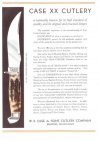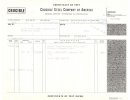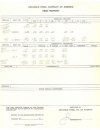Regarding the 'purity' of one steel type versus another, if you look & read around a bit on the web, you'll find lengthy discussions by well-regarded knifemakers on the topic. 1095, in particular, is known to vary all over the place in it's purity, and that can lead to some truly horrid results in performance. On paper, it SHOULD seem simpler with minimal alloying elements; but depending on whom manufactured it, there are often a lot of contaminants or inclusions that impact it's performance after heat-treat. This could apply to any non-proprietary steel recipe (such as AISI-spec'd steels like 1095, 420HC, 440A/C, etc), being manufactured widely by many different companies. It cannot be generically assumed that 1095 is always going to be more 'pure', because it's purity (in reality) is dependant on the quality of manufacture. Sometimes it's great in it's finished form, and other times it's absolutely terrible (I have examples of each in 1095 blades, the lesser of which could be put to shame by some decent 420HC blades).
The biggest obstacle to hardness or edge retention, with 420HC, is the lower carbon content at ~0.45-0.6%, which is barely more than half that of CV or 1095 (0.85-1.05% or so). Carbon is what makes steel hardenable by heat treat, and in amounts up to about ~2% or so, the more potential the steel has for greater hardenability. The higher carbon in CV or 1095, as compared to 420HC, is what will give it a built-in advantage in edge holding (assuming heat treat and everything else is competent). Lots of other factors play into it, but the carbon is fundametal to edge-holding, if heat treat or anything else is going to make much of a difference.
Over the years, Case's 420HC 'Tru-Sharp' has shown more variability in edge-taking or retention, as compared to what I've seen in their CV blades. But, I do have some of both in more recent vintage (post-2000), and edge retention between the two is essentially similar at the typically conservative hardness levels they set for them. I find myself touching up either one at essentially the same intervals, and to the same extent after using them in the same everyday tasks (I often carry at least one of each every day).
David





